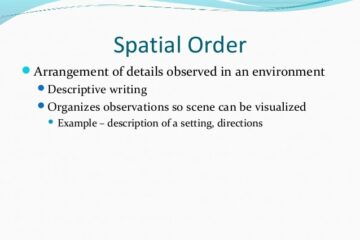Research Essay on the 2017 Tax Reform
Are you frustrated by your latest research essay and are looking for research papers for sale? Say no more! Here at Gudwriter we understand that most students prefer research papers that are written from scratch and sold online. Whatever your needs are, we will match you with a research paper expert who will exceed your expectations and get rid of your frustrations. Try us today!
Elevate Your Writing with Our Free Writing Tools!
Did you know that we provide a free essay and speech generator, plagiarism checker, summarizer, paraphraser, and other writing tools for free?
Access Free Writing ToolsThe Tax Reform of 2017 Essay Paper
The tax reform that came into force following its signing into law in 2017 has significantly changed the United States’ taxation system. It reduced tax rates by introducing new tax brackets. This was in spite of the number of tax brackets being retained. The legislation also increased the exemption amounts under the alternative minimum tax (AMT). Specifically, individual filers will now enjoy an exemption amount of $70,300, married but separate filers $54,700, and joint filers $109,400 (Kess, 2018). On the same note, for individual filers and other filers than joint filers, the threshold of phase-out has been increased to $500,000. For joint filers, it has been increased to $1 million. The new legislation went ahead to repeal personal and dependency exceptions as well. According to Kess (2018), another change in this respect has been the increase of standard of deduction. For household heads, this amount has been increased to $18,000 while for joint filers, it has been pushed up to $24,000. Other filers may claim a standard deduction of $12,000. Evidently, these are attractive figures that may lure many people into claiming the standard deduction. Read on interpersonal communication type of sample essays with examples.
The reforms further affected other family provisions. As explained by York and Muresianu (2018), the changes have given families the right to enjoy an expanded child tax credit. It has also done away with a previous practice known as personal exemption. Of note here is that the liability of an individual with respect to their tax obligations gets directly reduced by a credit. About the child tax, the amount of the child tax credit was increased by $1,000 so that the new amount is $2,000 for every child that qualifies (Kess, 2018). There was also an increase in the portion of the credit that may be refunded, with the new amount being $1,400. In the same breadth, there now exists a substantially increased adjusted gross income phase-out for this credit. Further, on itemized deductions, many rules were changed by the legislation. One of the new rules was a reduction in the cap for mortgage interest deduction for purchasing or constructing a home. The new amount in this regard is $750,000 as opposed to the $1 million that was being used previously (Kess, 2018). The Act also repealed itemized deductions phase-out for taxpayers earning high incomes.
A close consideration of the tax reform reveals that it takes into account optimal taxation as a theoretical foundation in some of its aspects. This theory posits that in applying a social utility function such as taxation, a social planner should consider distributional equity (Strnad, n.d.). In other terms, a government’s initiative to generate funds to drive its development agendas should see each citizen play a role by paying taxes. This should be on level grounds for everyone. In the new law, exemption amounts under the AMT were reduced for individual filers, married separate filers, and joint filers. When it came to standard of deduction, the amount was increased for all filers so that all taxpayers would be affected. Viewed through the lens of the Optimal Tax Theory, the tax reform sought to achieve distributional equity by making changes that would favor each taxpayer at the individual level.
It is also evident from the legislation that it has some aspects that are not in line with the economic theory of taxation. Economically, the basis of taxation is that a people should support their government by remitting taxes so the government may be able to offer them protection and other essential services (Salanie, 2011). In this regard, the burden of tax should be borne by individuals to the extent they can. This implies that depending on the income of an individual, the tax they pay may be lower or higher as compared to other people. However, by increasing the AMT exemption amount, the tax reform under discussion herein might have fully disregarded this economic perspective. It has actually given wealthier taxpayers the leeway to further reduce their taxable incomes. Perhaps those who developed the legislation reasoned that there is no need to “overtax” some taxpayers since the high amounts of money they earn are still be spent within the economy. Specifically, President Trump and his administration might have reasoned that the average tax payer needs a reduced tax burden and this may only be able if the entire taxation system is changed. In general, the new legislation on taxation provides a huge reprieve to tax payers in the U.S. economy.
References
Kess, S. (2018). First look at the tax cuts and jobs act of 2017: Impact on individuals. The CPA Journal, January 2018 Issue. Retrieved May 28, 2019 from https://www.cpajournal.com/2018/01/22/first-look-tax-cuts-jobs-act-2017/
Salanie, B. (2011). The economics of taxation. Cambridge, MA: MIT Press.
Strnad, J. (n.d.). Tax timing and the Haig-Simons ideal: A rejoinder to Professor Popkin. Indiana Law Journal, 62(73), 73-94. Retrieved from http://ilj.law.indiana.edu/articles/62/62_1_Strnad.pdf
York, E., & Muresianu, A. (2018). “The tax cuts and jobs act simplified the tax filing process for millions of households”. Tax Foundation. Retrieved May 28, 2019 from https://taxfoundation.org/the-tax-cuts-and-jobs-act-simplified-the-tax-filing-process-for-millions-of-americans/

Special offer! Get 20% discount on your first order. Promo code: SAVE20
